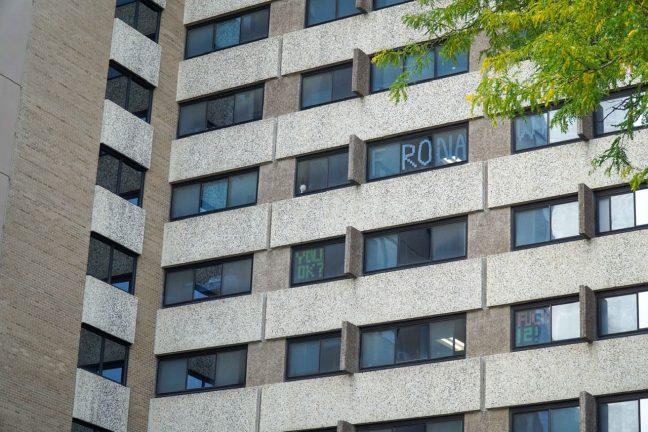The seven-day University of Wisconsin coronavirus percent positive rose to 2.9% on Wednesday. UW’s two largest residence halls, Sellery and Witte, required mandatory testing Monday amid these rising cases.
University Spokesperson Meredith McGlone said in an interview the Wisconsin State Journal that UW has modified the testing process to quickly identify rises in cases and case clusters.
McGlone said to WSJ that the testing process in the residence halls takes focused action in order to avoid building-wide quarantines like the ones UW enforced in September. In a statement to The Badger Herald, McGlone said the rise in cases was not surprising.
“We’ve been expressing concern for several weeks now, along with local and state leaders, about the continuing spike in COVID-19 cases in Dane County and throughout Wisconsin,” McGlone said. “It is unfortunately not surprising that we are also seeing an increase in positivity rates on campus, although our rates continue to be below the surrounding community.”
Mandatory weekly testing for all students living in UW residence halls was established in September. Last week, the “adjusted testing plan” for residents of the Ogg and Witte Halls required immediate testing on Nov. 4.
Though it is possible Halloween accelerated the spread of cases, UW expert of population health sciences Oguzhan Alagoz said it is difficult to attribute the increase to a one-time event. Alagoz said the increase started before Halloween weekend.
“Halloween definitely could have contributed, but it’s very difficult to attribute this time of increase to a one-time event. We have seen the increase even before Halloween, so I would not just blame it all on Halloween,” Alagoz said. “Of course Halloween and any events where more people are coming together, and they are letting their guards down [which] is contributing to an increase.”
UW asked students to limit out-of-home activity while on break and limit interactions with others two weeks upon returning. McGlone said in a statement this is particularly important given that many students are planning to travel home at Thanksgiving.
Alagoz said he is not very optimistic about case growth due to the general population’s fatigue of quarantine and living with COVID-19 taking a toll.
Alagoz said he is not as worried about campus spread of COVID-19 as he is about students’ spread to the communities they travel to during the holidays.
“People are going to travel to all different parts of the state and out of the state, so depending on where people travel to and whether they are careful or not certainly has a risk of increasing the cases,” Alagoz said. “If people do travel and then come back and interact with the community, where there isn’t aggressive testing like in the University, then things could get out of control.”
UW is recommending students test immediately upon return to campus after Thanksgiving and quarantine, at least until they obtain their negative COVID-19 results.
Alagoz said the rigorous testing on campus will help the campus adjust after Thanksgiving break.
“It’s difficult to make policy decisions from a scientist’s view because, say, a method decreases coronavirus cases. Is it feasible and possible? Those questions are a part of a different level of decision making,” Alagoz said.


